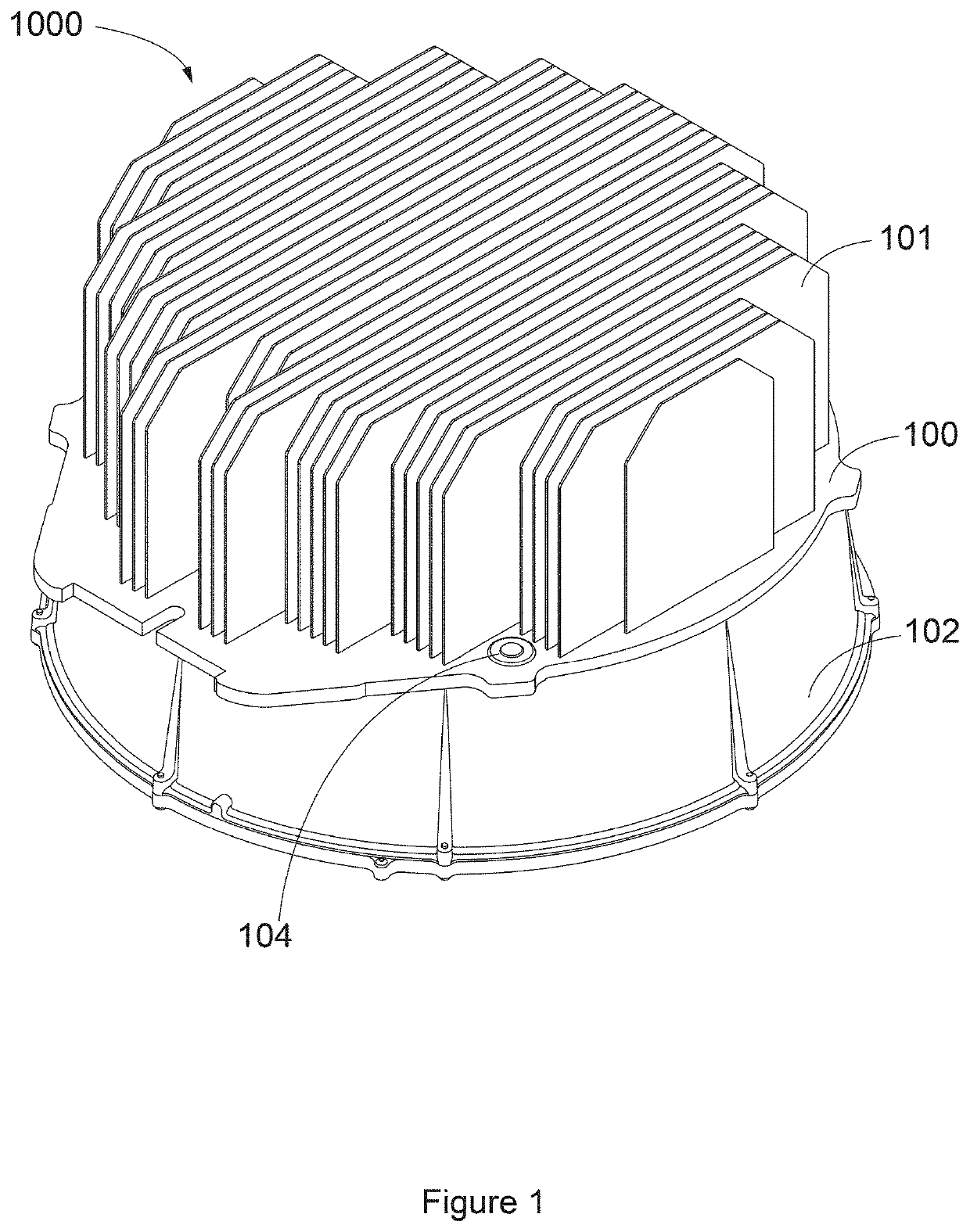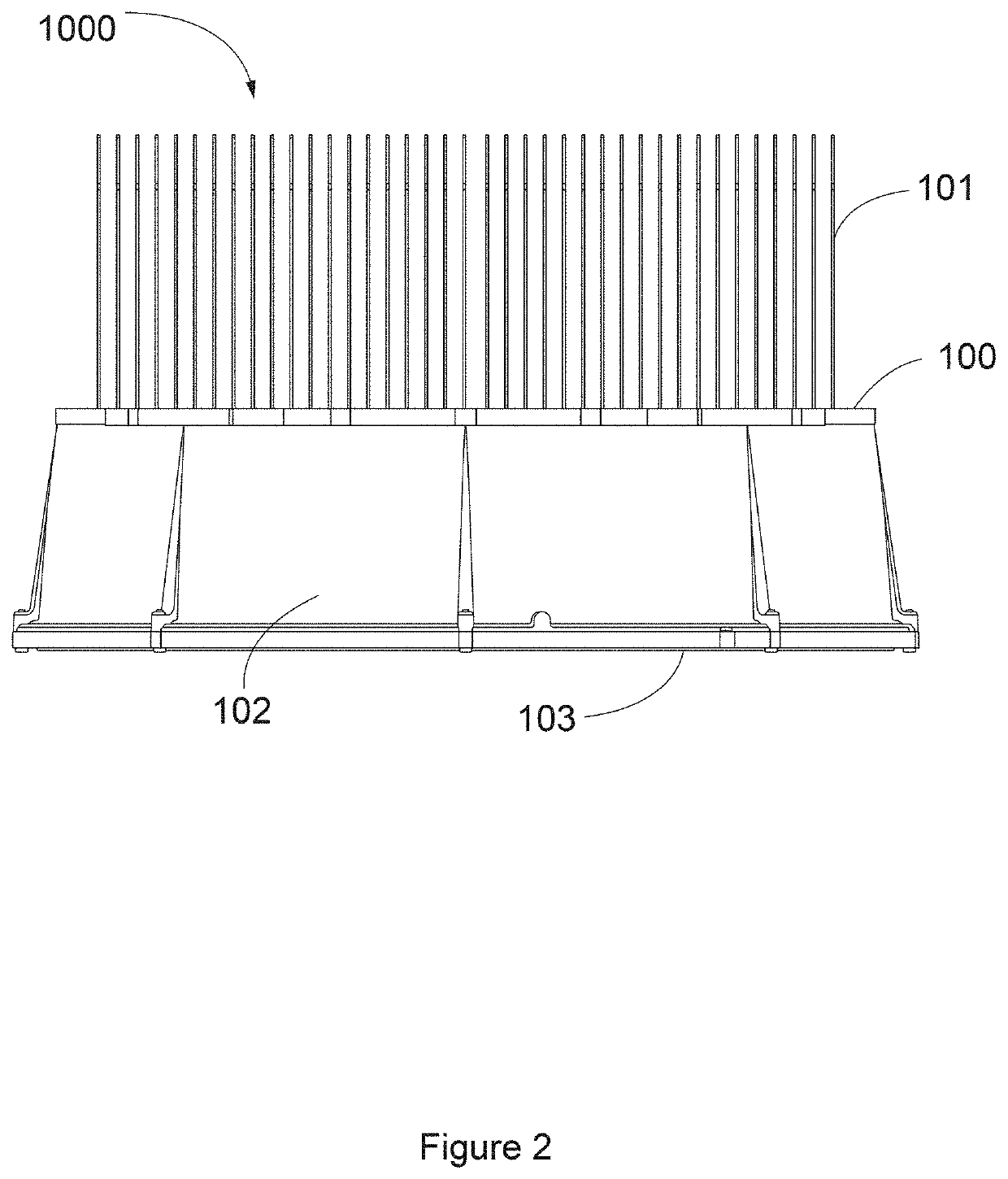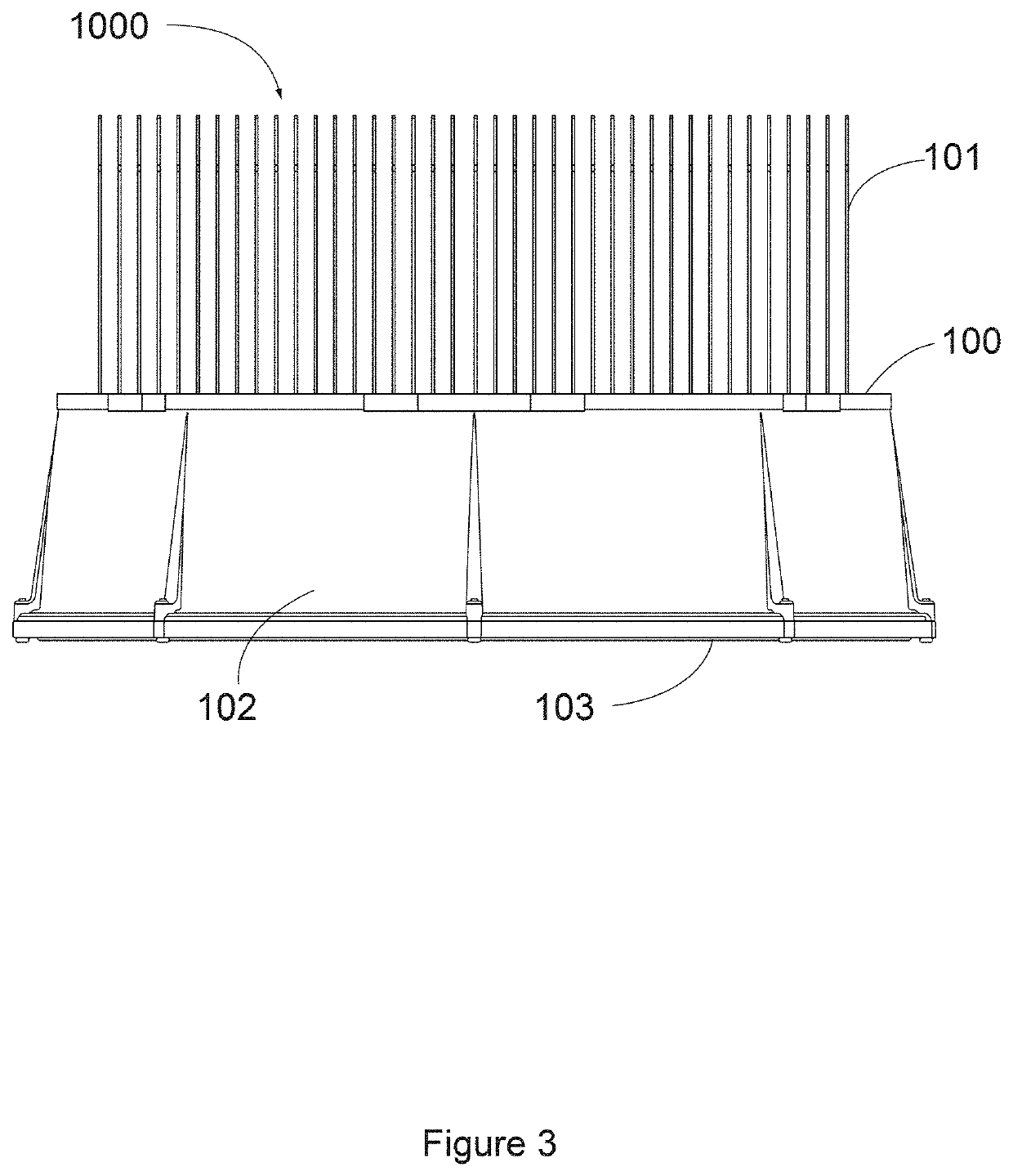Apparatus, method, and system for reducing moisture in LED lighting fixtures
a technology of led lighting fixtures and accessories, applied in the direction of lighting and heating equipment, semiconductor devices for light sources, separation processes, etc., can solve the problems of condensation on the interior side of glass lids or covers, change of liquid state to gas state, and trapped moisture within the internal space, so as to reduce moisture, reduce moisture, and effectively function without maintenance or change-out
- Summary
- Abstract
- Description
- Claims
- Application Information
AI Technical Summary
Benefits of technology
Problems solved by technology
Method used
Image
Examples
embodiment 1
D. Exemplary Apparatus Embodiment 1
[0034]FIGS. 8 and 9 illustrate a first embodiment; note that for clarity no LEDs, LED boards, light directing and / or light redirecting devices, or electrical connections are illustrated (see FIGS. 17-18C for examples of at least some of the aforementioned). Here, a desiccant material 303 of assembly 300 is inserted into housing 102 of fixture 3000, and held in place via fastening devices 301 extending through a hold-down plate 302 and into a complementary portion 304 of housing 102. Here, desiccant material 303 is encased or contained in at least a gas permeable bag (it could be at least partially liquid permeable) so long as the material retains the desiccant. Such bag material can be the same or similar to that used in any of the wide variety of bagged desiccants that are put in packaging of products to absorb moisture. The material of the bag should allow sufficient transfer of moisture to the desiccant to be effective for the purposes described...
embodiment 2
E. Exemplary Apparatus Embodiment 2
[0036]FIGS. 10 and 11 illustrate a second embodiment; note that for clarity no LEDs, LED boards, light directing and / or light redirecting devices, or electrical connections are illustrated (see FIGS. 17-18C for examples of at least some of the aforementioned). Here, a desiccant material 400 is piped into, foamed, or otherwise formed in place in some portion of the lower hemisphere of the internal space of fixture 4000. In practice, any of a variety of moldable desiccants could be used; for example, those available from DryTech, Inc., Cookstown, N.J., USA.
[0037]Primary benefits of the present embodiment are such that (i) since desiccant 400 is physically near the site of condensation in the lower hemisphere of the internal space of the fixture, moisture is rapidly collected and removed from interior emitting face of glass 103, and (ii) the present approach can be readily implemented in a factory setting and therefore an amount / type / capacity of desic...
embodiment 3
F. Exemplary Apparatus Embodiment 3
[0038]FIGS. 12 and 13 illustrate a third embodiment; note that for clarity no LEDs, LED boards, light directing and / or light redirecting devices, electrical connections, or desiccant are illustrated (see FIGS. 17-18C for examples of at least some of the aforementioned). Here, a loose desiccant material (not shown) of assembly 500 is poured into a perforated aluminum alloy tube 501 within the internal space of fixture 5000. As can be seen, perforated tube 501 exists in sections, each section closed at opposite ends by a cap 503 once desiccant is inserted, the desiccant having a particle size larger than the perforations so to avoid spilling out (e.g., 2-4 mm diameter silica gel beads available from Dry & Dry, Brea, Calif., USA). One possible means of affixing tubes 501 in situ is to rely upon existing portions 304 of housing 102 by affixing a first portion of a bracket 502 to said portion 304 (e.g., via fastening device 301), and securing (e.g., via...
PUM
| Property | Measurement | Unit |
|---|---|---|
| volume | aaaaa | aaaaa |
| water weight | aaaaa | aaaaa |
| temperature | aaaaa | aaaaa |
Abstract
Description
Claims
Application Information
 Login to View More
Login to View More - R&D
- Intellectual Property
- Life Sciences
- Materials
- Tech Scout
- Unparalleled Data Quality
- Higher Quality Content
- 60% Fewer Hallucinations
Browse by: Latest US Patents, China's latest patents, Technical Efficacy Thesaurus, Application Domain, Technology Topic, Popular Technical Reports.
© 2025 PatSnap. All rights reserved.Legal|Privacy policy|Modern Slavery Act Transparency Statement|Sitemap|About US| Contact US: help@patsnap.com



